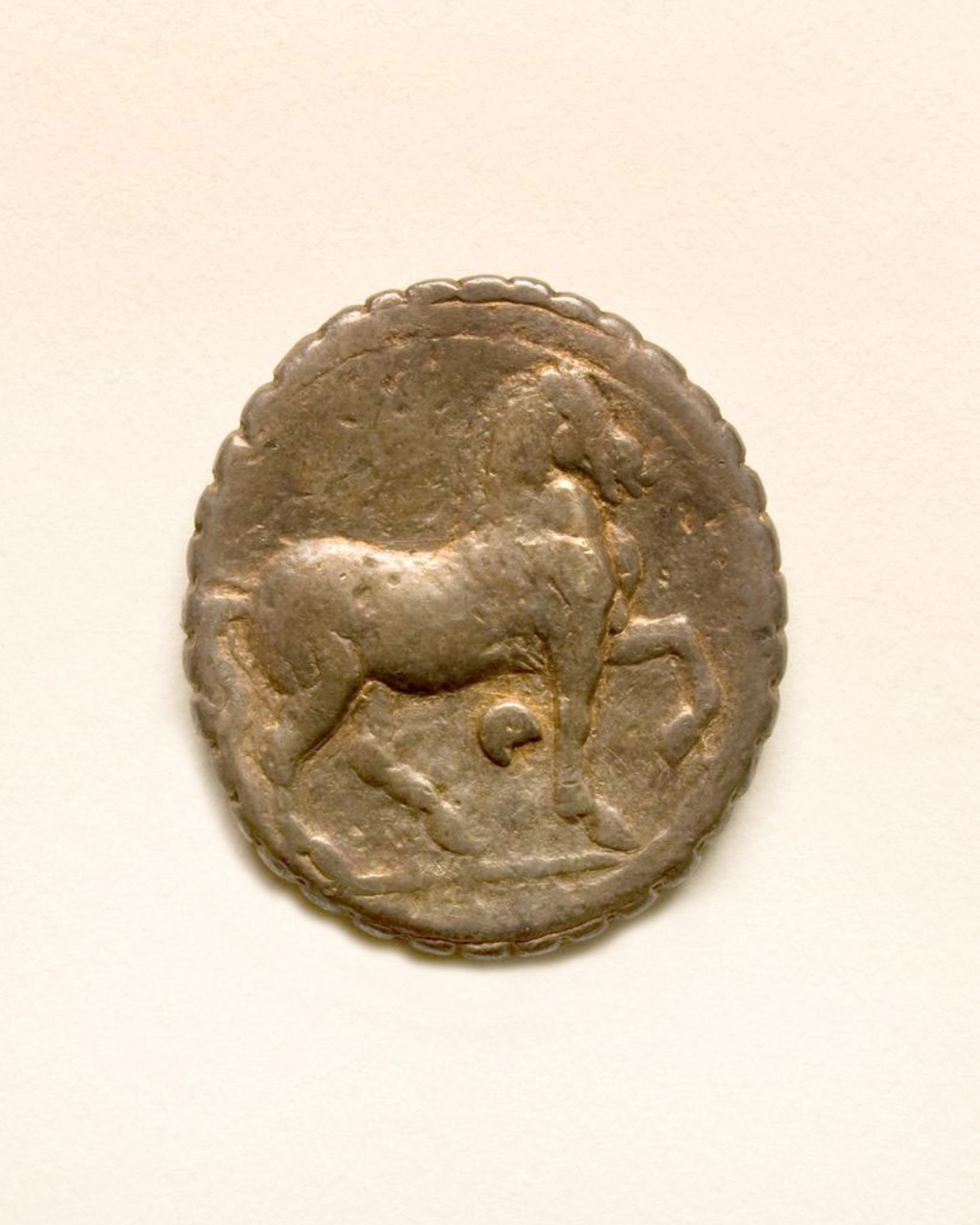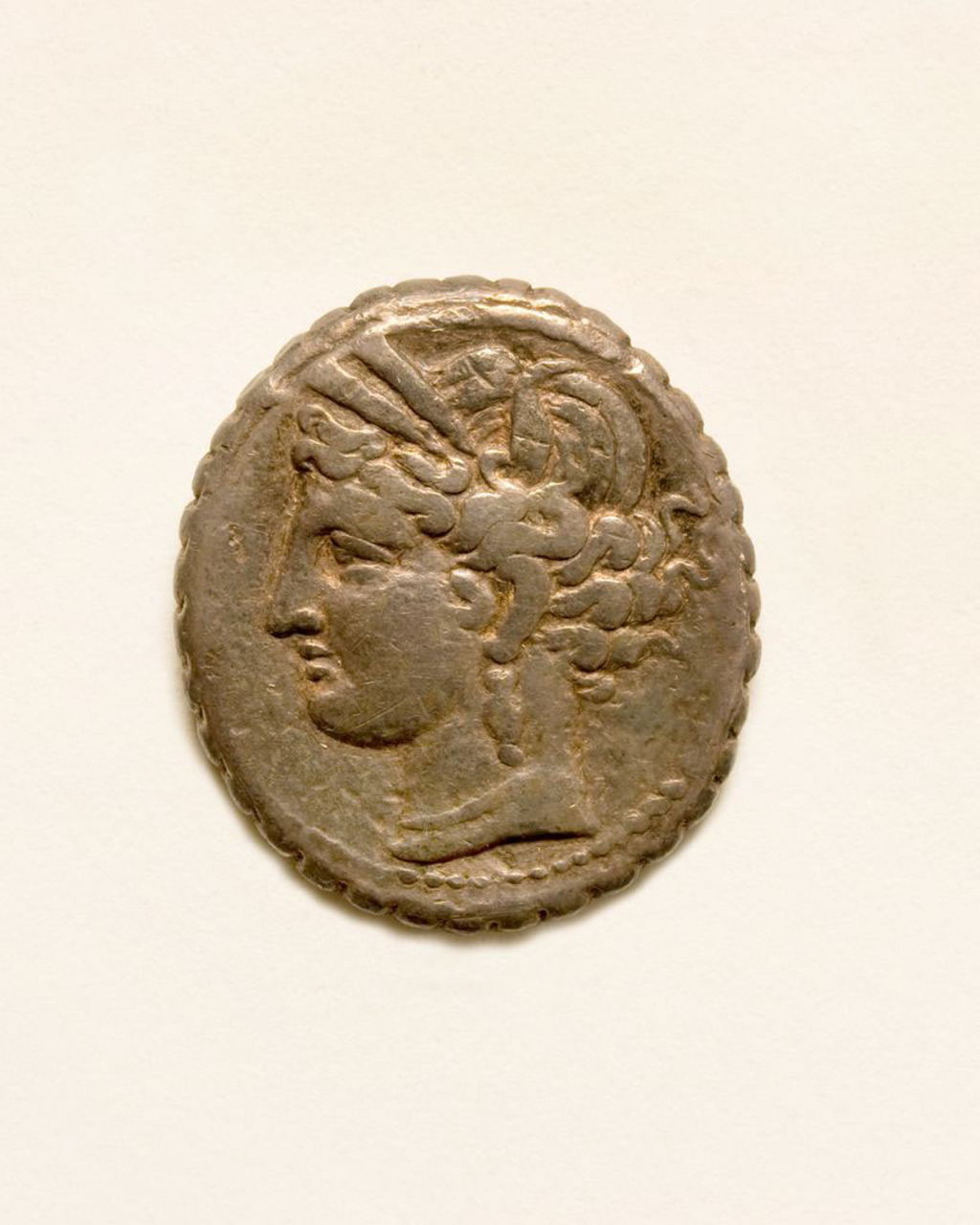Given
to Dominique de Menil in 1924, this silver coin is oval in shape and has
serrated edging, both unusual features. Close study of the imagery identifies
it as a Punic coin from ancient Carthage, a city in modern Tunisia that was
originally a Phoenician colony. The female on the obverse is Tanit, one of the
main goddesses of Carthage, who frequently appears on the city’s coins. She
wears a drop earring, a double wheat wreath, and either a necklace or collared
gown. Part of the original dot border is visible. On the reverse, a horse
without a halter faces right with its left foreleg lifted and stands on a
straight ground line. The horse was a known symbol of Carthage and a common
feature on the reverse of their coins. Additionally, the serrated edge is a
characteristic of some Carthaginian coins, although its purpose is unknown.
Carthage
fought three main wars with Rome before ultimately being conquered by the
Romans in 146 BCE. Famous generals in the first two wars include Hamilcar Barca
and his son, Hannibal. A debate in the Roman Senate prior to the third war is
the origin of the famous phrase “Carthage must be destroyed” (“Carthago delenda
est”). This particular coin was minted between 149–146 BCE during the 3rd Punic
War. Coins like this one were issued primarily to pay mercenary forces. After
the defeat of Carthage, the city was razed and the area became a Roman province
known as Zeugitana.


